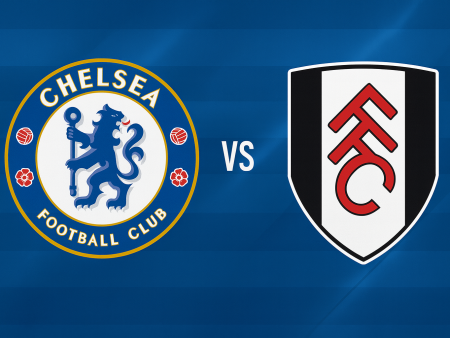The Tactical Blueprint Behind Chelsea’s 2016-17 Premier League Triumph: Exploring the 3-4-2-1 Formation
During an era marked by evolving football tactics, the 3-4-3 and its close cousin, the 3-4-2-1, emerged as transformative formations across top European leagues. While Serie A clubs had long championed three-at-the-back systems, Antonio Conte’s tactical masterstroke with Chelsea during the 2016-17 Premier League season redefined their popularity in English football. This article delves into how Conte’s adaptation of the 3-4-2-1 formation propelled Chelsea to title glory, changing the landscape of English football and influencing managers nationwide.
The Pivotal Shift: How Conte Rejuvenated Chelsea’s Season
Two months into the 2016-17 campaign, Chelsea’s season was faltering, highlighted by a humiliating 3-0 deficit at half-time against rivals Arsenal. Faced with mounting pressure, Antonio Conte made a bold decision by switching to a three-at-the-back system-oscillating between a 3-4-3 and a 3-4-2-1. The effect was immediate. Chelsea embarked on a record-tying 13-match winning streak, matching Arsenal’s 2002 “Invincibles.” This tactical revolution culminated in the club achieving a Premier League record for most wins in a season-30 out of 38 matches.
Conte’s innovative approach wasn’t merely a product of personnel but of imposing a well-drilled system and style that optimized each player’s role. The shift from a traditional back four to the 3-4-2-1 particularly unsettled Premier League opponents, who struggled to devise effective counter-strategies. This transformation marked a seminal moment in English football, inspiring even typically conservative managers to experiment with back-three systems and demonstrating that a shift in formation could directly lead to competitive success.
Demystifying the 3-4-2-1: Key Features and Strategic Advantages
The 3-4-2-1 system differs subtly yet significantly from the 3-4-3. In the Chelsea model, flank play was less reliant on wide forwards and more on the relentless overlapping runs from wing-backs. The two advanced midfielders (Hazard and Pedro) frequently drifted inside, operating as inverted wingers, while the wing-backs (Marcos Alonso and Victor Moses) provided width-often forming an attacking line of five.
This configuration delivered several tactical advantages:
- Overloads in wide areas, stretching opponents’ defenses.
- Inverted wingers becoming central goal-scoring threats.
- Fluid attacking lines, creating unpredictability.
- Enhanced defensive balance thanks to three central defenders and dual midfield screeners.
Additionally, Conte’s personnel decisions were pivotal. Players who had previously shown limitations or had not excelled in a standard back four-such as Alonso and Moses-were unleashed in new roles, maximizing their athleticism and discipline.
David Luiz: The Modern Libero in Chelsea’s Back Three
Central to the success of the 3-4-2-1 system was David Luiz’s deployment as a libero, or “free” defender. This Italian-inspired role released Luiz from constant man-marking, allowing him to orchestrate play from deep and focus on distributing the ball rather than engaging exclusively in one-on-one duels.
Luiz thrived when flanked by disciplined stoppers-Cesar Azpilicueta, noted for his sharp reading of the game, and Gary Cahill, recognized for his positional intelligence. This trio not only fortified Chelsea defensively but also enabled smooth transitions from the back, with Luiz dictating play and sparking counterattacks.
Midfield Synergy: The Kante-Matic Partnership
The engine of Chelsea’s formation was the perfectly balanced midfield duo of N’Golo Kante and Nemanja Matic. Kante, renowned for his energy and tackling, provided relentless coverage-especially behind marauding wing-backs. His workrate allowed Chelsea to recover possession quickly and protected the back line during transitions.
Matic, meanwhile, offered both defensive solidity and forward thrust. His positional discipline allowed Kante freedom to roam, and his distribution contributed to Chelsea’s fluid build-up. In the 2016-17 season, Matic showcased surprising creativity, registering 7 assists-a testament to Conte’s system empowering players to expand their games.
In this arrangement, both midfielders needed acute positional awareness, capable of supporting the defense, covering wide areas, and launching attacks-a demanding set of responsibilities they fulfilled superbly.
Diego Costa’s Crucial Role as a Target Man
While much attention fell on Hazard and Pedro for their creative exploits, Diego Costa’s contribution as the lone striker was indispensable. Costa excelled at holding up play, engaging defenders physically, and linking with onrushing teammates. His ability to occupy multiple center-backs simultaneously gave Chelsea’s inverted wingers time and space to exploit central channels.
His 20 goals in 35 league appearances, supplemented by 7 assists and 42 chances created, underscore how his all-round game matured under Conte. Costa wasn’t just a finisher-he became the lynchpin for Chelsea’s attacking shape, vital in both phases of build-up and final-third creation.
Essential Player Profiles for the 3-4-2-1 System
To effectively implement a 3-4-2-1 formation, teams must field specific player profiles in each position. Here are the key requirements:
- **Goalkeeper:** Proficient with feet, capable of launching attacks or playing short from the back.
- **Central Libero:** Excellent passing range and composure, able to initiate plays from deep and adapt defensively without strict man-marking.
- **Wide Center-backs:** Strong in one-on-one situations, tactically aware, and comfortable overlapping if the attack requires.
- **Wing-backs:** Exceptional stamina and pace, defensively astute, and able to provide consistent attacking width.
- **Central Midfielders:** Technically skilled and positionally disciplined, capable of supporting both defensive and offensive transitions.
- **Advanced Midfielders/Inverted Wingers:** Creative, dynamic, comfortable playing in half-spaces, and capable of both scoring and assisting.
- **Centre Forward:** Physically robust, skilled at holding up the ball and linking play, adept at operating alone while supporting wingers and wing-backs.
| Position | Key Attributes Required |
|---|---|
| Goalkeeper | Confident distribution, calm under pressure, ability to play short and long |
| Central Libero | Vision, passing range, game reading, comfort in possession |
| Wide Center-backs | 1v1 defending, tactical intelligence, willingness to support attack |
| Wing-backs | Endurance, speed, disciplined positioning, both attacking and defensive skills |
| Central Midfielders | Awareness, tactical discipline, workrate, technical ability |
| Advanced Midfielders (Inverted Wingers) | Creativity, movement, spatial awareness, goal threat |
| Centre Forward | Physical strength, hold-up play, finishing, intelligent positioning |
Lasting Impact and Legacy of Chelsea’s 3-4-2-1
Chelsea’s dominant 2016-17 campaign stands as a landmark in Premier League history-not only for its record-breaking achievements but for demonstrating how a strategic overhaul can unlock the potential of an entire squad. Antonio Conte’s innovative adaptation of the 3-4-2-1 not only maximized individual talents but reshaped tactical thinking across England’s top tier. The ripple effects of this success are visible in the continued evolution of tactical formations and the widespread adoption of back-three systems in modern football.
By harnessing a flexible tactical blueprint, emphasizing player strengths, and pioneering bold changes, Chelsea’s 2016-17 side exemplified how innovation on the training ground can translate to silverware and lasting footballing influence.













